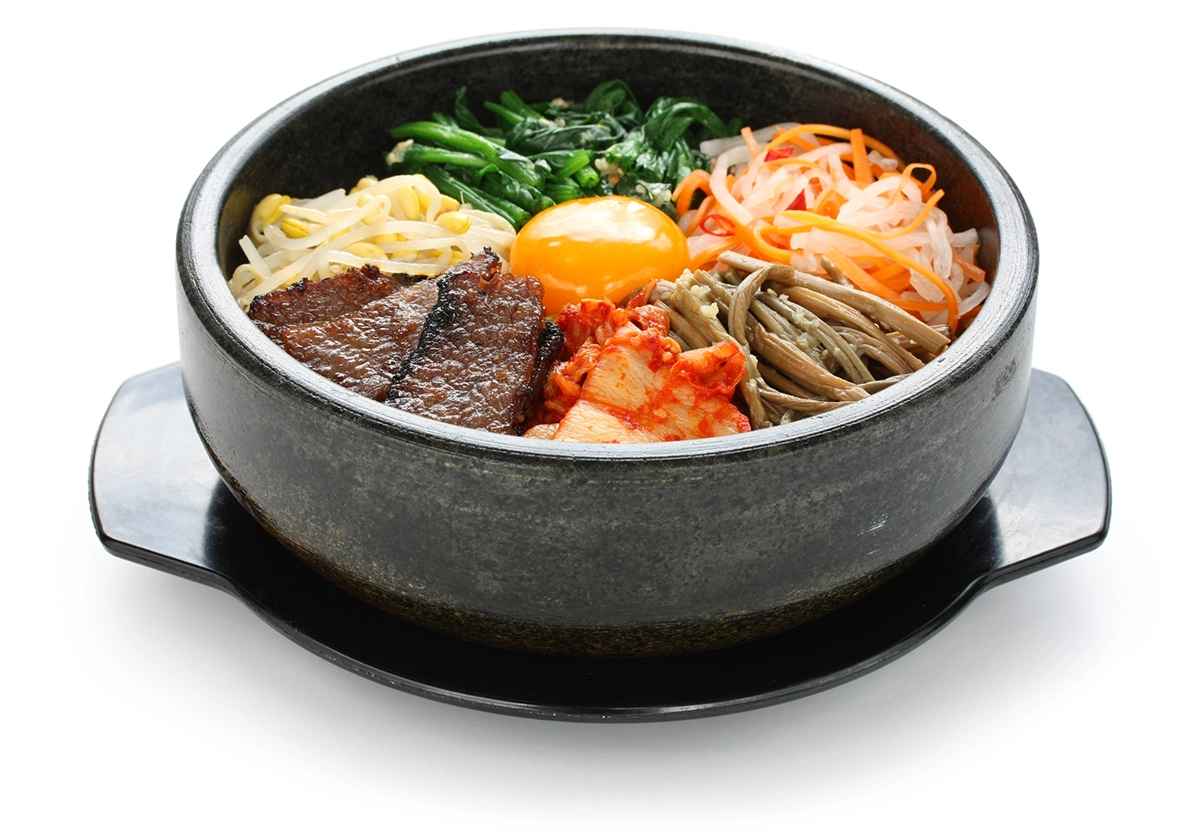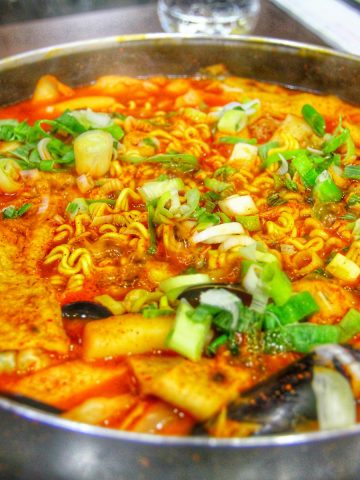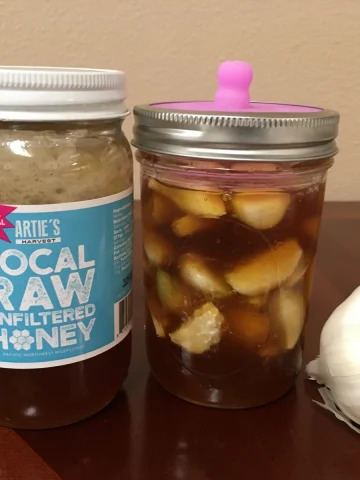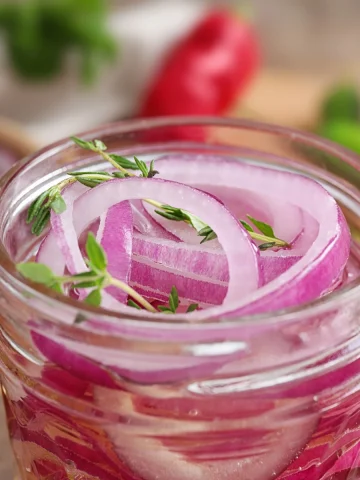Rice bowls are incredibly delicious and healthy. Generally, they’re made by mixing rice, vegetables, and a tasty protein of your choice. Rice bowls are incredibly affordable, which cements them as an excellent meal prep option. Best of all, they can be made in as little as 30 minutes.
The benefits of eating rice bowls are only multiplied when you add kimchi. This fermented superfood adds considerable vitamins and probiotics to any meal and makes for a delicious pairing with rice bowls. This article will cover how to make your own amazing kimchi rice bowl in under 30 minutes.
Why You'll Love a Kimchi Rice Bowl
Kimchi is a delicious, fermented vegetable that is a staple of Korean cuisine. In fact, many people enjoy eating it every day. And with just a little prep work, we can make quick and easy kimchi rice bowls for meals on demand.
There are so many varieties of kimchi to choose from that you might need help wrapping your head around it. The massive flavor variety can make it easy to design your perfect meal. These rice bowls are super customizable, with tons of toppings and sauces to go alongside your kimchi of choice.
Kimchi is rich in vitamins and beneficial probiotics. Eating just a small portion of kimchi will refresh your system and benefit your gut health. However you prepare your kimchi rice bowls, they will be a refreshing and filling meal. These rice bowls are perfect for boosting your performance and energy.
Not all kimchi has the same probiotic benefits. If you want to give your gut the best boost, preparing your kimchi can be a fun way to do so. Aside from being incredibly healthy, homemade kimchi has the added benefit of flavoring it in any way you like.
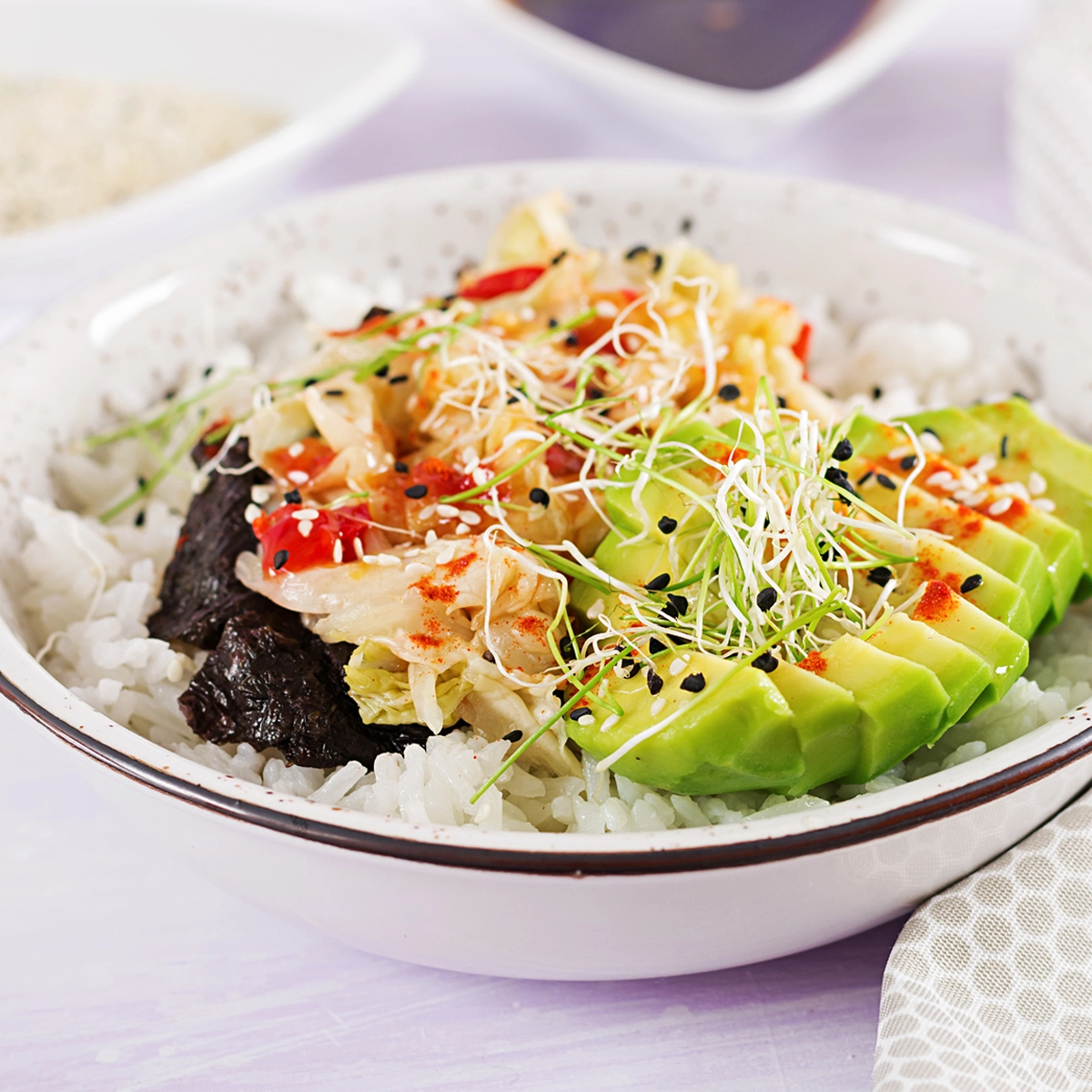
Ingredients for a Kimchi Rice Bowl
There are many ways to prepare a kimchi rice bowl. Depending on what ingredients you use, the flavor can vary widely. You can add ingredients like honey or agave to make your rice bowl sweet or stir in a little bit of gochujang to add some delicious umami and spice.
Cooked Rice
This easy, vegetable-studded kimchi rice recipe uses fresh or leftover white rice. Leftover rice saves you time during the prep. However, preparing the rice at the same time is perfectly fine too.
White rice, jasmine rice, mixed rice, and brown rice are all great options for a kimchi rice bowl. If you like sticky rice, we recommend shopping for short-grain white rice.
Quinoa and cauliflower rice are excellent options to make your spicy kimchi rice bowl extra nutrient-packed.
One cup of uncooked rice will usually make around three cups of cooked rice, so you can use two to three cups if you plan on meal-prepping.
Half a cup of uncooked rice is usually sufficient for one generous single-serving portion.
Kimchi
The superstar of this recipe is the kimchi due to its fantastic tangy, spicy pop of flavor. I use store-bought kimchi to make this bowl easy to put together. Check out this post on which kimchi brands are full of gut-healthy probiotics.
While still delicious, shelf-stable kimchi is pasteurized and lacks the fresh variety's nutrients and gut health benefits. This is why we recommend making your kimchi, if possible.
Protein
We use fried eggs to make it a quick recipe to pull together. But you can add any protein you prefer. Leftover rotisserie chicken, thinly sliced beef steak, tofu, and seitan are all excellent options.
Season your protein to add some extra flavor. Consider making chicken with a ginger and soy sauce marinade or even preparing a delicious batch of sweet and sour glazed tofu.
Veggies
Vegetables will add incredible freshness and crispness to your Korean rice bowl. Cucumber, bell pepper, bok choy, spinach, radishes, scallions, carrots, red cabbage, and bean sprouts are great choices.
We recommend cutting your vegetables thin with a mandoline or spiralizer to give them a light texture.
Avocados add a creamy texture you will love!
Seasoning
Lastly, decide how to season your rice bowl. Gochujang chili paste, sesame oil, olive oil, rice vinegar, soy sauce, and sriracha are all great options.
Top it with this dry kimchi seasoning for added heat. Or peanut sauce for its creamy, spicy, sweet, and savory flavor.
Last update on 2025-05-22 / Affiliate links / Images from Amazon Product Advertising API
How To Make A Kimchi Rice Bowl
Full details are in the recipe card below, but here are the basics:
Quick preparation is an integral part of making your kimchi rice bowl. Cook rice according to package instructions or use leftover rice to save time.
Season and warm up the day-old rice by pan-frying it separately.
Get your pans heating up, and chop and slice the vegetables simultaneously.
Then add the crunchier vegetables, such as carrots, to the greased, non-stick frying pan and season to taste.
Once cooked for 3-4 minutes, add the softer vegetables, such as spinach and kale, for another two minutes until done.
Add kimchi and some of its liquid to the vegetable mixture.
Divide the cooked rice between two bowls, then top with the veggie and kimchi mixture.
Add a little extra kimchi liquid, sriracha, and soy sauce to make it soupy and extra delicious!
Top each bowl with a fried egg!
Tip: Remove the kimchi from the fridge and let it warm. We don’t recommend cooking the kimchi at temperatures above 115°F because it will kill the beneficial bacteria.
Allow it to sit out and warm up is the best option for retaining beneficial bacteria. If you’re in a hurry, you can heat the kimchi in a pan at a very low temperature.
Try our Vegetarian Budae Jjigae recipe.
Conclusion
No matter how you prepare it, a kimchi rice bowl will surely please. The easy preparation and versatile ingredient make this dish a winner for many meal-prepping households.
You won’t regret giving this recipe a try. The unique flavor of kimchi makes this dish unforgettable.
Frequently Asked Questions
Do I Need to Use a Specific Type of Kimchi?
You don’t have to use a particular type of kimchi. In fact, the possibilities are limitless if you decide to make your kimchi at home.
Can I Use Canned Kimchi?
You can use canned kimchi. As mentioned, pasteurized kimchi might lack some of the probiotic benefits of homemade kimchi. However, you’ll still enjoy all of the vitamins and delicious flavors that kimchi is known for.
How Can I Adjust the Spiciness Level of the Kimchi Rice Bowl?
You can adjust the spiciness of the kimchi rice bowl by choosing your seasonings and kimchi carefully. Kimchi is produced to varying degrees of spiciness. White kimchi is very mild, while most red kimchi is on the spicy side. You can use chili paste to make your kimchi rice bowl spicier.
Can I Make a Vegetarian or Vegan Version of the Kimchi Rice Bowl?
Making a vegan or vegetarian kimchi rice bowl is possible. Choose tofu or seitan, which are both packed with protein. Wise Goat, Cleveland Kitchen, Madge's, and Sinto Gourmet are all brands that make vegan kimchi.
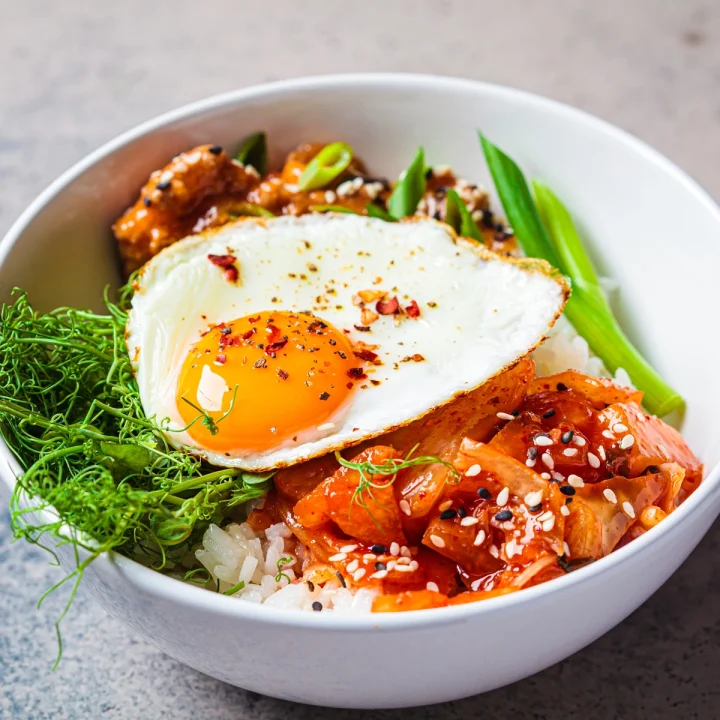
Kimchi Rice Bowl
These healthy kimchi rice bowls are so delicious and easy to prepare!
Ingredients
- 2 cups cooked rice (use your favorite variety). Depending on the type, you'll need approximately ⅔ cup of uncooked rice to yield this amount.
- 1 tablespoon butter
- 2 tablespoons of sesame oil
- 3 cloves garlic finely minced or pressed
- 4 tablespoons soy sauce
- 1 tablespoon minced ginger
- 1 cup of vegetables thinly sliced or julienned: cucumber, bell pepper, bok choy, spinach
- 2 fried eggs
- 1 cup kimchi, chopped, if necessary, into bite-sized pieces
- Garnish with chopped green onions, gochujang chili paste, toasted sesame seeds, a splash of chili oil
Instructions
- Prepare the rice according to package directions or use leftover rice.
- If using leftover rice, season and warm it up separately from the eggs or protein.
- Heat 2 tablespoon sesame oil and butter over medium-high heat in a large nonstick or cast iron skillet. Once hot, add the firmer vegetables like carrots, onion, bell pepper, red cabbage and cook for 3-4 minutes.
- Add the minced garlic, ginger, soy sauce, and softer vegetables such as spinach and kale.
- When veggies are vibrantly colored and beginning to soften — about two more minutes — turn off the heat and add your kimchi and a little bit of its juice.
- Toss the veggies and kimchi one last time.
- In a separate pan, cook the eggs to your liking; sunny side up, over easy, or poached.
- Divide the rice, vegetables, and kimchi into two bowls.
- Top each bowl with an egg.
- Garnish with avocado slices, sprouts, chopped green onions, gochujang chili paste, toasted sesame seeds, and a small sprinkling of red pepper flakes (garnishes optional)
Notes
Additional options:
1 cup cooked protein: Tofu, seitan, chicken, beef, and shrimp
Vegetables: radishes, scallions, carrots, red cabbage, avocado, spinach, kale, avocado, and bean sprouts
Seasoning options: gochujang chili paste, sesame oil, olive oil, rice vinegar, soy sauce, and sriracha




